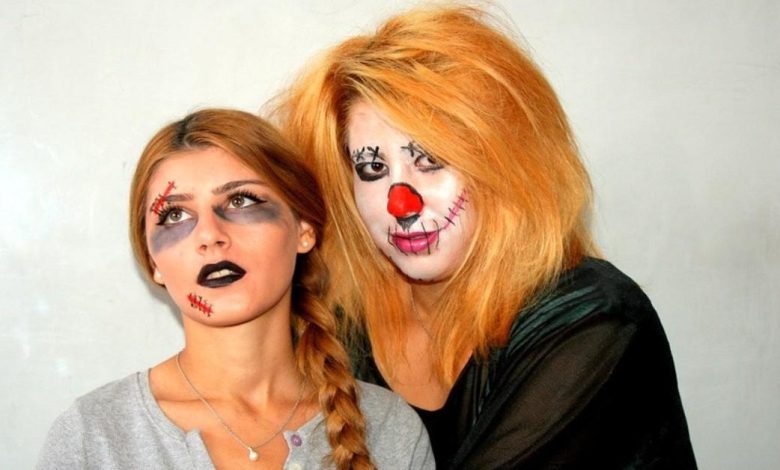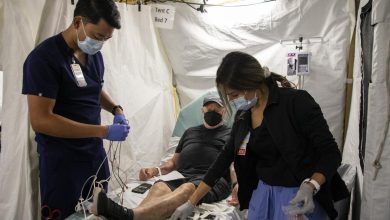Your Old Halloween Makeup Could Be Harming You — Experts Explain How

Halloween is a time for creativity, spookiness, and fun. From eerie zombie faces to glamorous witch looks, makeup plays a big role in transforming people into their favorite characters. But while you might be tempted to dig out last year’s glitter palettes and face paints, dermatologists and toxicologists are warning that your old Halloween makeup could do more harm than you think.
Expired cosmetics, especially low-cost Halloween products, can harbor harmful bacteria, toxic chemicals, and allergens that may lead to skin irritation, infections, or even long-term health risks. Before you reach for that dusty makeup kit, here’s what experts say you need to know.
1. Why Old Makeup Is a Hidden Health Hazard
Many people assume that because Halloween makeup is used only once or twice a year, it’s perfectly fine to reuse the leftovers. However, just like regular cosmetics, Halloween makeup has an expiration date—and once that time has passed, it’s no longer safe.
Dr. Marissa Lopez, a board-certified dermatologist, explains:
“Makeup products, especially those with water or oil bases, can become breeding grounds for bacteria and fungi once they’re opened. Using expired or contaminated products on your face can lead to irritation, breakouts, or even serious infections.”
The shelf life of makeup varies depending on the product:
- Liquid and cream-based makeup: 6–12 months after opening
- Powder products: up to 2 years
- Mascara, eyeliner, and liquid face paints: 3–6 months
Many Halloween kits don’t include expiration dates, making it even more difficult to know when they’ve gone bad. If your makeup smells odd, has changed texture, or looks discolored, it’s time to toss it out.
2. The Bacteria Lurking Inside Old Makeup
Old makeup isn’t just ineffective—it can be a petri dish of harmful microbes. Studies have shown that up to 90% of used makeup products contain some form of bacterial contamination, including Staphylococcus aureus, E. coli, and Pseudomonas aeruginosa.
When applied to the skin—especially around the eyes, nose, and mouth—these bacteria can cause infections ranging from mild rashes to pink eye, styes, or even cellulitis.
“People often forget that every time they use a brush or sponge, they introduce bacteria from their skin into the product,” says Dr. Anthony Briggs, an infectious disease specialist. “If the makeup is stored for a year in a warm, humid bathroom, it becomes the perfect environment for bacteria to thrive.”
Even if you haven’t used the makeup since last Halloween, exposure to air, moisture, and temperature fluctuations can break down preservatives that prevent bacterial growth.
3. Toxic Ingredients Still Found in Halloween Makeup
Halloween makeup is often considered “theatrical” or “costume-grade,” meaning it doesn’t have to meet the same strict safety standards as everyday cosmetics. That’s where things can get dangerous.
A 2016 study by the Campaign for Safe Cosmetics found that many inexpensive Halloween makeup kits contained heavy metals like lead, cadmium, arsenic, and mercury—substances that can be toxic even in small amounts.
Lead, for instance, has no safe exposure level. It can accumulate in the body and has been linked to neurological issues, developmental delays in children, and kidney damage.
Dr. Lopez warns:
“Even if the makeup looks fine, the chemical stability may deteriorate over time. Old products can release more of these harmful substances as preservatives break down.”
Some products may also contain parabens, phthalates, and formaldehyde-releasing agents, which act as preservatives but are known endocrine disruptors. Over time, exposure to these chemicals can interfere with hormones and may increase the risk of certain cancers.
4. The Risks of Using Non-Cosmetic Products as Makeup
Another common mistake during Halloween is using non-cosmetic items—like craft paints, markers, or glitter glue—as makeup. These products aren’t made for skin contact and may contain industrial-grade pigments or solvents that can cause chemical burns or severe allergic reactions.
Even if you used them last year without issue, that doesn’t guarantee safety this time. Skin sensitivity can develop over time, and old or degraded products may have altered chemical compositions.
Dr. Lisa Chen, a toxicologist at the University of California, notes:
“People assume that if something is non-toxic, it’s safe for skin. But non-toxic just means it won’t poison you if ingested—it doesn’t mean it’s safe for dermal use.”
So, if you’re thinking about using leftover face paint from your craft drawer, it’s better to leave it there.
5. Allergic Reactions and Skin Sensitivity Risks
Even if your old Halloween makeup hasn’t spoiled or grown bacteria, your skin might not react the same way it did before. Sensitization—the process where the body becomes allergic to a substance after repeated exposure—can happen at any time.
Common symptoms of a reaction include:
- Redness and swelling
- Itching or burning sensation
- Flaking or blistering
- Watery eyes or runny nose
Those with eczema, acne, rosacea, or sensitive skin are especially at risk. According to Dr. Lopez, “Old makeup can contain oxidized ingredients that irritate the skin even if they weren’t harmful when first opened.”
Performing a patch test before applying makeup is crucial, especially if it’s been sitting around for months. Apply a small amount to your inner arm and wait 24 hours—if you notice redness or irritation, don’t use it on your face.
6. The Dangers of Sharing Makeup at Halloween Parties
Halloween parties often involve friends sharing makeup, brushes, and sponges—but experts say that’s a big mistake.
When multiple people dip their fingers or brushes into the same product, cross-contamination becomes inevitable. Viruses like herpes simplex (cold sores) and conjunctivitis (pink eye) can easily spread through shared cosmetics.
Dr. Briggs emphasizes:
“Even a single use of someone else’s eyeliner or lip product can transmit infection. Always use your own makeup, and if you’re a makeup artist, use disposable applicators and sanitize tools between clients.”
7. How to Check If Your Halloween Makeup Is Still Safe
Before you reuse last year’s makeup, take a few minutes to inspect it carefully. Here’s what to look for:
✅ Check the expiration date — If it’s past its shelf life, throw it away.
✅ Smell the product — A sour, musty, or chemical odor is a clear sign of spoilage.
✅ Inspect texture and color — If it’s clumpy, separated, or faded, it’s unsafe.
✅ Look for mold or film — Even a slight layer of residue indicates contamination.
✅ Check for irritation history — If you remember the product stinging or burning before, don’t risk using it again.
If you’re unsure, err on the side of caution and replace it. Your skin will thank you later.
8. How to Store Halloween Makeup Properly
Proper storage can extend the life of your makeup and keep it safer to use. Follow these expert tips:
- Keep it in a cool, dry place — Heat and humidity speed up bacterial growth.
- Avoid storing in bathrooms — The moisture from showers can contaminate open containers.
- Close lids tightly after each use.
- Clean brushes and applicators after every session with a mild cleanser or alcohol-based sanitizer.
- Avoid dipping fingers directly into jars—use clean spatulas or disposable tools instead.
Following these steps can make your Halloween makeup last longer without compromising safety.
9. Safer Alternatives: What to Use Instead
If you’re worried about using old or potentially unsafe makeup, there are plenty of skin-safe alternatives available today.
Look for:
- Dermatologist-tested and hypoallergenic makeup brands
- Water-based face paints that are labeled non-toxic and cosmetic-grade
- Products certified for children’s use, which typically meet stricter safety standards
- Natural or mineral-based pigments free from parabens, phthalates, and formaldehyde
Some trusted brands that offer safe Halloween makeup include Mehron, Snazaroo, Ben Nye, and E.l.f. Cosmetics.
For DIY enthusiasts, try natural alternatives like:
- Activated charcoal mixed with aloe vera for black face paint
- Beet juice for natural red tones
- Cocoa powder for brown contouring
Always test homemade products first to ensure your skin tolerates them.
10. Expert Tips for a Safe and Stunning Halloween Look
You don’t have to compromise your skin’s health for a killer costume. Here are dermatologist-approved tips for a safe and beautiful Halloween makeup routine:
- Prep your skin: Start with a clean, moisturized face to create a barrier between your skin and makeup.
- Use a primer: This helps makeup adhere better and prevents direct contact with your pores.
- Avoid the eye area: Especially when using glitter or metallic paints, as they can irritate or scratch the eyes.
- Remove makeup properly: Use a gentle makeup remover or micellar water, followed by a hydrating cleanser.
- Moisturize afterward: Soothe your skin with aloe vera or a fragrance-free moisturizer.
- Don’t sleep in your makeup: Even if you’re exhausted after the party, cleanse your skin thoroughly before bed.
The Bottom Line: Don’t Let Your Makeup Haunt You
Halloween should be about fun, not hospital visits. Reusing old, expired, or unsafe makeup might seem like a harmless shortcut, but the risks—from bacterial infections to chemical exposure—aren’t worth it.
As Dr. Lopez puts it:
“Your skin is your body’s first line of defense. Treat it with care—especially when applying something that’s been sitting in a drawer for a year.”
This Halloween, invest in fresh, high-quality, skin-safe makeup. Your look will not only be more vibrant but also safer for your skin’s health. After all, the only scary thing about your costume should be the makeup design—not what’s lurking inside the makeup itself.




